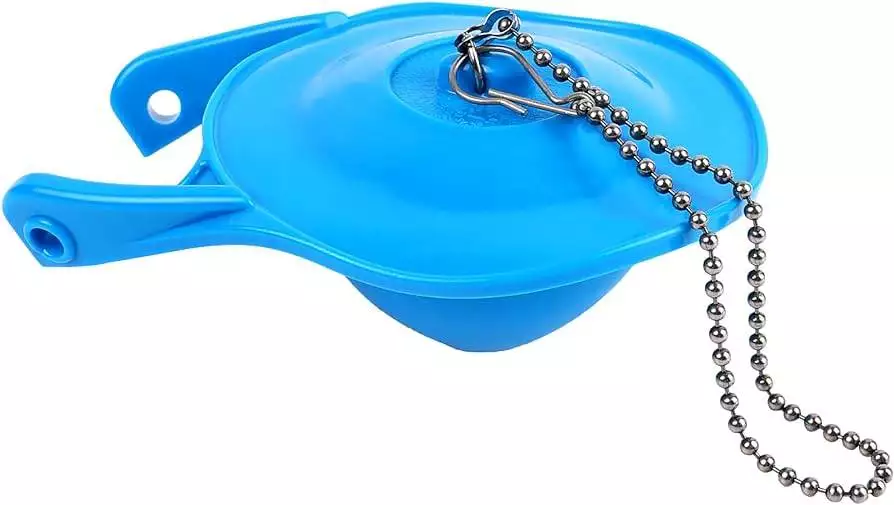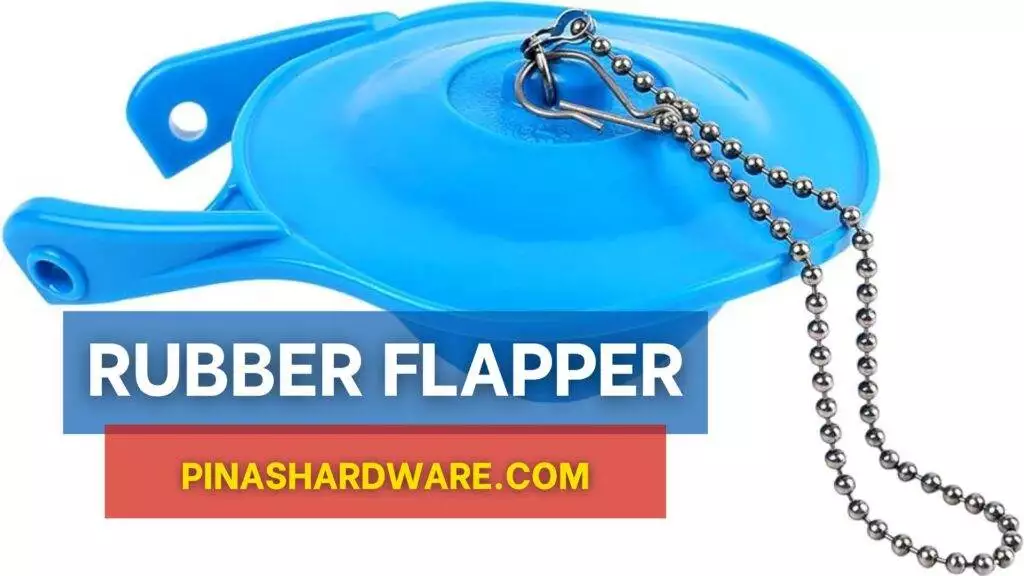A rubber flapper is a term used to describe a part of a toilet tank mechanism. It is a rubber flap or valve, attached to the flush handle by a chain or rod, that closes the tank’s bottom entrance. The flushing operation of the toilet is started when the rubber flapper raises, letting the water from the tank into the bowl. The rubber flapper closes the aperture to stop water from constantly pouring into the bowl after the flush cycle is finished.
Rubber Flapper Prices
Rubber Flapper prices vary depending on its brand, length, and width. Its price ranges from ₱176.00 to ₱299.00.
| Details | Length | Width | Prices |
| UVO | 44 cm | 35 cm | ₱289.00 |
| UVO | 47 cm | 37 cm | ₱299.00 |
| UVO | 43 cm | 36 cm | ₱299.00 |
| Armstrong | 44 cm | 35 cm | ₱176.00 |
| Ecodex | 43 cm | 36 cm | ₱236.00 |
| Ecodex | 44 cm | 35 cm | ₱224.00 |

Advantages of Rubber Flapper
Watertight Seal – When closed, rubber flappers offer a dependable and waterproof seal that stops water from constantly dripping into the bowl from the tank. This minimizes waste and aids in maintaining the tank’s water levels.
Flexible Material – The rubber utilized to make flappers is strong and flexible, so it won’t break down easily after frequent use. This lessens the necessity for regular replacements and guarantees constant performance for a long time.
Simple Installation – Replacing and installing rubber flappers in toilet tank systems is a fairly simple task. Usually, they are simple to install on the flush valve and just need little changes to operate correctly.
Compatibility – Rubber flappers are a flexible option for both residential and business toilets since they work with the majority of common toilet tank designs and flushing systems.
Disadvantages of Rubber Flapper
Sensitivity to Water Quality – Rubber flappers have the potential to be vulnerable to the water quality in the toilet tank. Rubber may break down more quickly in situations where it is exposed to hard water or water with high mineral content, which can result in an early breakdown and require repeated replacements.
Possibility of Warping or Distortion – Rubber flappers are subject to constant exposure to chemicals and water in the tank, which can cause them to warp or distort over time. This may lead to incorrect flushing or sealing, which could cause leaks or wasteful water use.
Chain Malfunctions – Usually, a chain connects the rubber flappers to the toilet handle. But occasionally, this chain can get entwined, trapped, or detached, which can lead to the flapper staying open or closing incorrectly. Problems like unfinished flushing cycles or constantly running water may arise from this.
Limited Lifespan – Rubber flappers, although resilient, have a constrained lifespan and may require replacement regularly, particularly in commercial or high-traffic environments. The total expense and hassle of toilet care might increase with the necessity for routine replacement and repair.
Video of Rubber Flapper
FAQs
How frequently should the rubber flapper in my toilet tank be changed?
The condition of the flapper, usage, and water quality all affect how often rubber flappers need to be replaced. Generally speaking, to guarantee continuing performance, it is advised to check the flapper for wear or damage regularly and to replace it every three to five years.
What are some common symptoms that my toilet tank’s rubber flapper needs to be replaced?
Requiring a new rubber flapper is often indicated by a toilet that runs nonstop, uneven flushing, or water seeping into the bowl from the tank. Furthermore, obvious degradation, warping, or wear on the rubber substance are clues that the flapper might be deteriorating.
Are rubber flappers compatible with all flushing systems and toilet tank designs?
Rubber flappers work with the majority of common flushing systems and toilet tank designs. For best results, some toilet types could need flappers made of unique materials or designs. For information on compatibility concerns, it is best to refer to the manufacturer’s instructions or speak with a plumber.
How can I make sure my toilet tank’s rubber flapper is properly maintained?
The rubber flapper should be properly maintained by checking it for wear or damage regularly, cleaning the flapper and flush valve seat to get rid of any buildup or debris, and making sure the chain that connects the flapper to the flush handle is straight and not tangled. Frequent maintenance guarantees effective toilet functioning and extends the flapper’s lifespan.
Can I use any other material in place of a rubber flapper?
Although rubber flappers are the most popular choice, some toilet models may work with flappers made of silicone or plastic; still, it’s crucial to check fit and performance to avoid problems like leaks or poor sealing.

